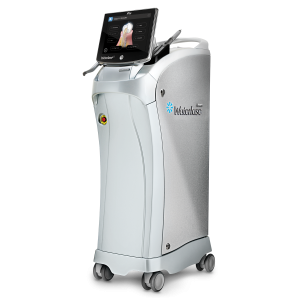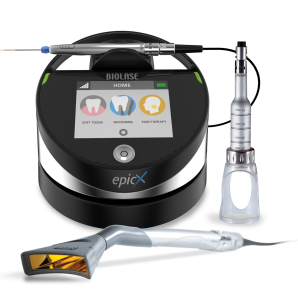Laser Dentistry
Benefits:
Cavities
We use dental lasers to prepare a tooth for the placement of a restoration. It works with no heat or vibration, so often, little or no anaesthesia is required, while also protecting the surrounding enamel. It is precise, so preserves more of the healthy tooth. Its antimicrobial effect destroys bacteria to ensure no contaminant remains in the tooth.
Gum Disease/Periodontal Treatment
The laser is highly effective in treating gum disease and a lot more comfortable for the patient. Its precision and the antimicrobial properties allow gum disease treatment in a non-surgically and more effectively. Its healing properties encourage the regrowth of both soft tissue and bone. This non-surgical treatment can be performed as an adjunct to traditional scaling and root planing to fight bacteria that could enter the bloodstream during scaling and root planing.
Root Canal Treatment
Cleans and disinfects root canals more effectively than only with conventional methods. Lasers are effective on the highly resistant Enterococcus Faecalis. The Waterlase removes the infection-harbouring instrument smear layer with the Diode disinfecting deep inside the dentin tubules.
Gum Contouring and other Soft Tissue Surgery
A laser is used instead of a scalpel, and it is more precise, so the cosmetic outcome is much improved. Because we use no scalpels, there is less post-operative pain, swelling, and bruising. Healing is encouraged without scarring or tissue shrinkage.
Benefits of Lasers over Conventional Surgery:
- Lasers can seal blood vessels, thereby achieving hemostasis.
- Lasers close lymphatic vessels, so decrease post-surgical swelling.
- Lasers reduce mechanical trauma to the tissue.
- Lasers reduce bacterial counts, thereby promoting predictable healing with minimal post-operative inflammation.
Photobiomodulation or Low-Level Laser Light Therapy
PBM is a fast-growing technology used to treat many conditions that require stimulation of healing, relief of pain and inflammation, and restoration of function. Mitochondrial chromophores absorb the photons in cells. Consequently, ATP, nitric oxide release, blood flow, reactive oxygen species increase, and diverse signalling pathways get activated. Stem cells can be activated, allowing increased tissue repair and healing.



